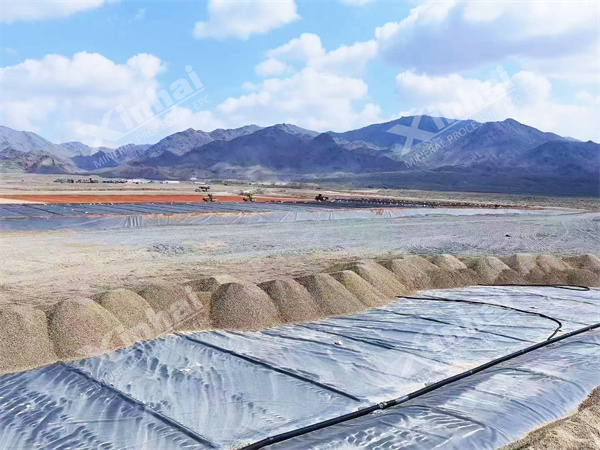The global mineral resources are increasingly depleted, and high-grade ore resources are gradually decreasing. Therefore, the development and utilization of low-grade ores has become an inevitable trend. However, the beneficiation of low-grade copper containing gold mines has not been effectively solved due to technical difficulties, high costs, and multiple environmental risks. The heap leaching carbon adsorption method proposed in this article provides a new solution for the beneficiation of low-grade copper bearing gold ores through technological innovation.

Heap leaching carbon adsorption method is a mineral processing method that combines traditional heap leaching process with activated carbon adsorption technology. This method uses sodium cyanide solution as a leaching agent and contacts the ore through spraying to achieve gold leaching; The leached gold containing solution is adsorbed by activated carbon to achieve gold enrichment; Subsequently, copper was removed from the gold loaded carbon through cyanide copper removal process, achieving copper gold separation.
(1) Preparation for heap leaching
Select suitable low-grade copper containing gold ore, adjust heap leaching conditions according to the particle size and moisture content of the ore, and ensure that the ore has good permeability and uniformity.
(2) Cyanide leaching
Using low concentration sodium cyanide solution as a leaching agent, it is uniformly sprayed onto the ore heap through a spray system to achieve gold leaching. During the leaching process, it is necessary to control the concentration, spraying rate, and pH value of the sodium cyanide solution.
(3) Activated carbon adsorption
The gold containing solution is passed through an activated carbon adsorption tower, and gold ions are adsorbed by activated carbon to achieve gold enrichment. The adsorption process requires controlling the liquid-solid ratio, contact time, and temperature.
(4) Cyanide copper removal
The adsorbed high copper gold loaded carbon is subjected to cyanide copper removal treatment, and an alkaline sodium cyanide solution is used for static copper removal under certain conditions. The copper removed solution is used for spraying at the end of heap leaching.
(5) Late copper deposition
The copper stripping solution is diluted by adsorbing the lean solution and used as the spray solution at the end of heap leaching, allowing some copper to re precipitate in the yard. At the same time, gold is leached using the sodium cyanide produced by the copper precipitation reaction.
(6) High temperature and high pressure cyanide free desorption
Perform cyanide free desorption on the copper removed carbon under high temperature and high pressure conditions, and electrodeposit the extracted gold containing solution to obtain crude gold powder.
(7) Gold refining
Refining crude gold powder to obtain high-purity gold ingots.

Cost effectiveness: The heap leaching carbon adsorption method has a simple process, low investment, and low production cost.
Environmental safety: Compared to traditional methods, it reduces the use of cyanide and environmental pollution.
Easy to operate: The process flow is short, making it easy for industrial implementation and operational management.
Efficient utilization of resources: effectively improving the adsorption and desorption rates of gold, optimizing production technology indicators.
The heap leaching carbon adsorption method provides an effective technical approach for the beneficiation of low-grade copper containing gold ores. This method not only improves the recovery rate of gold, but also reduces the difficulty and cost of subsequent processing through copper gold separation technology, which has broad application prospects.